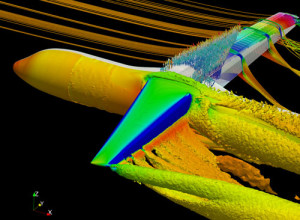Perhaps technology is the fueling agent responsible for a transformed living in the modern world. Although the technical quantum leaps are never without risks, they provide innovative solutions to the most pressing global challenges of our time. From computer chips modelled in human brain to zero-emission card fueled by Hydrogen, this year’s 10 emerging technologies offer a vivid glimpse of the power of innovation to transform industries, to improve believes and to safeguard our planet.
FUEL CELL VEHICLES
Fuel Cell Vehicles are zero emission vehicles that run on hydrogen. Having many advantages over electronic and hydrocarbon powered vehicles, the “Fuel Cells” have been proved to be more environment friendly. However the technology has only begun to grow, many automobile companies are planning to launch them. The initial cost of such may be high but is expected to come down significantly as volumes increases within the next couple of years.
 NEXT-GENERATION ROBOTICS
NEXT-GENERATION ROBOTICS
Introduction of robots in everyday life has encouraged human- machine collaboration in daily lives. Advanced and cheaper sensors make robots capable to understand and respond during interactions. Robot bodies are becoming more adaptive, flexible with time. They have replaced many human counterparts in industries, mainly automotive where repetitive or dangerous tasks are involved. Using GPS like smartphones, robots have also begun to be used in precision agriculture for weed control and harvesting.
RECYCLABLE THERMOSET PLASTICS
Thermoset Plastics unlike the thermoplastics cannot be recycled and reshaped many times. Heating or reshaping of thermoset plastic for recycling process makes it lose its molecular orientation. This durability is on one hand includes it into our daily life and on the other ending them up as land filling material. Thus critical advances are made in this area introducing new classes of recyclable thermoset plastics, called as poly(hexahydrotriazine)s, or PHT’s which can be dissolved in strong acid and ultimately reassembled into new products.
 PRECISE GENERIC-ENGINEERING TECHNIQUES
PRECISE GENERIC-ENGINEERING TECHNIQUES
Techniques are now emerging to directly change the genetic code of plants to make them more nutritious and better adaptable to environment. Genetic engineering has led reliable and harmless methods to make changes in the genetic orientation of agricultural crops make them less prone to diseases and preventing them to fight against viruses. Another aspect of genetic engineering that holds for a major advance is the use of RNA interference (RNAi) in crops. RNAi is effective against fungal pathogens and viruses, and can also protect plants against insect pests, reducing the need for chemical pesticides.
ADDITIVE MANUFACTURING
Additive manufacturing is all about building materials from loose materials such as liquid or powder building three dimensional shapes using a digital template. An important stage in additive manufacturing in near future would be building integrated electronic component such as circuit boards. 4D Printing is also expected to emerge in building materials that can change themselves in response to environmental changes such as humidity and heat.
 EMERGENT ARTIFICIAL INTELLIGENCE
EMERGENT ARTIFICIAL INTELLIGENCE
Artificial Intelligence can be simply defined as the science of making computer do the things that humans can do. Artificial intelligence is expected to change our world with self-driving cars, intelligent war fare robots, mechanical arms for complex surgeries and even super machines to explore the universe. Artificial Intelligence enables the machines to learn things and respond to environment in response, in contrast to normal hardware and softwares.
DISTRIBUTED MANUFACTURING
Unlike the traditional methods of bringing the raw materials to a centralized place and then carrying out manufacturing, distributed manufacturing instead encourage materials and good to be manufactured locally with local resources using specialized software and technologies. Instead of raw materials travelling through roads and other transport lines, it focuses on digital data travel through web.

‘SENSE AND AVOID’ DRONES’
Advancement in the rapidly growing technology is the use of drones. Drones are none other than flying vehicles without a pilot. The pilot remains on the ground and monitors the drones. They can be great help in surveillance for large agricultural lands, to monitor electric lines, to supply food and medical help in disaster struck areas, etc.
NEUROMORPHIC TECHNOLOGY
Neuromorphic chips are computer chips that intend to mimic the logic and structure of functioning of a human brain. Engineers and researchers are now trying to build computer chips that can capture, store and process information without further transferring it to another processing unit. This process can be more efficient as a lot of time is consumed and heat generated in the transfer of data in traditional computer chips.
 DIGITAL GENOME
DIGITAL GENOME
Today, genome can be easily sequenced and digitized in minutes at a cost of only few hundred dollars. The results can also be delivered to your laptop or shared via internet. This ability to quickly and cheaply determine our genetic makeup can bring revolutions in more effective medical treatments. This individual genome can help people save from deadly diseases such as Cancer by providing the accurate genetic information about the tumors.
Stay tuned for living the “transformation”. A decade back, who knew that I would be able to pay using my mobile phone? Every invention changes the way people live and some of those transform the lives. Ten technologies discussed above are anticipated to revolutionize human life not only in the medical or health domain, but in agriculture, space sciences, robotics as well as warfare.
Image courtesy: www.cdn.bmwblog.com || www.wedemain.fr || www.blogs.exeter.ac.uk || www.popsci.com|| www.designboom.com|| www.monkeytoldme.com|| www.asymmetrex.com|| www.unmannedsystemstechnology.com|| www.bp.blogspot.com|| www.tu-braunschweig.de|| www.images.clipartpanda.com||










